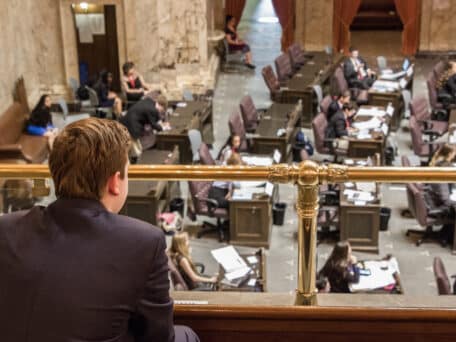Sound Transit officials did not lose a minute preparing a strategy for selling their Sound Transit 3 (ST3) plan—complete with its $15 billion price tag—to the public. The package would require “a new property tax, higher sales taxes, car-tab taxes, some combination, or other sources.”
As Shift previously reported, a listing from Sound Transit requests “proposals from firms, partnerships, joint ventures, etc. that consist of part creative agency and part production studio to develop and produce short videos that support public engagement efforts (primarily online via websites and social media) around potential mass transit system expansion…Videos will help the public understand why transit expansion beyond current voter-approved projects is critical to the region’s economic health and livability.”
Of course, it doesn’t take a public relations expert to know that the transit agency has quite a lot of work to do if they are to successfully convince voters to, once again, trust them with their hard-earned tax dollars. After all, time and time again, Sound Transit has proven itself untrustworthy. But, as the Sound Transit officials appear to realize, it will take a public relations expert to sell ST3 to voters.
There is major question Sound Transit will have to answer in order to successfully sell ST3 to voters: Why, given all the broken promises, should taxpayers trust Sound Transit to keep its promises and spend their hard-earned dollars responsibility, on time and on budget?
The facts of the past—in the end, the only means by which voters can judge trustworthiness—do not bode well for Sound Transit.
The following are facts voters need to know in order to answer the question above:
- In 1996, Sound Transit promised voters its light rail proposal in ST1 would carry 105,000 riders per weekday between Seattle and Sea-Tac Airport by 2010. Voters approved new taxes to fund ST1. In 2014, the agency announced it reached 33,000 riders per weekday or roughly one-third what it promised voters to obtain its original funding.
- Sound Transit promised voters it would complete its link light rail plan (Seattle-SeaTac Airport) by 2006. It opened in 2009, three years after the scheduled deadline. And, the line was much smaller than what was promised to voters
- In 1996, Sound Transit promised voters it would complete U-Link (light rail extension to Seattle’s University District) by 2006 as part of its 10-year plan in ST1. Currently, the agency does not plan to complete the extension until 2016, 10 years after the deadline – and at double the cost.
- Again, in 1996, Sound Transit promised to open a 45th street station in Seattle by 2006. Though it is a mere one-mile extension, the agency only expects to deliver on its promise in 2020. To be clear, that’s FOURTEEN more years for a one-mile extension.
- As part of ST1, Sound Transit promised voters that light rail riders would pay 40% of the cost to operate the line. By 2013, ridership fees only covered 28% of the cost, nearly 30% below the level Sound Transit promised. The agenda now relies on taxes to subsidize light rail at a greater portion than promised– and long into the future.
- Based on a 1999 Environmental Impact Statement (EIS) for its “starter line” (the original ST1 light rail plan), Sound Transit promised voters cost would be $2.3 billion in Year of Expenditure dollars. Today that cost has been more than doubled. The latest projection places costs at about $5.3 billion in Year of Expenditure dollars.
- Voters are not the only ones Sound Transit has misled. In order to secure a $500 million federal grant, Sound Transit promised the federal government it would reach 11.5 million riders by 2011. The transit agency received the money. But, in 2014, Sound Transit only had 10.9 million riders—so the feds have basically waited three more years for Sound Transit to meet its promise, and the agency is still over a half-million riders short of the promised figure.
As Shift reported, experts estimate that the average King County household in Sound Transit’s special taxing district (about 80 percent of King County residents) currently “pays over $1,100 every year in local taxes just for mass transit, not including the state or federal taxes they pay.” Local taxes paid to Sound Transit amounted to about $550 per household in 2013 alone. By 2018, the financial burden for Sound Transit rail and buses is expected to rise to $643 in yearly taxes under the current tax rate.
Sound Transit’s ST3 would significantly add to the cost burden. If voters pass ST3,“the average household’s tax burden would balloon to $1,185 in 2018, a $542 increase just for Sound Transit rail and buses.” But, that’s not all. The transit agency “could increase the property tax burden on residents and add another $100 to a typical household’s tax bill, based on a $400,000 property valuation.”
Given Sound Transit’s history of broken promises, the voters of King, Snohomish and Pierce Counties would be wise to ask Sound Transit officials a few questions of their own– starting with, “Why should we add to our burdens, when you can’t deliver on your promises?”




